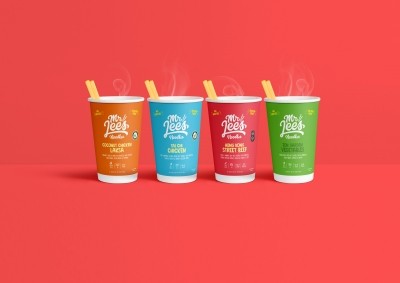Bigger not always best: Agile and innovative smaller brands making waves in Australia

According to data from insights firm IRI, the food and beverage retail market in Australia (excluding fresh foods) was valued as an A$43.8bn (US28.3bn) sector in 2019, and delivered 3.6% value growth compared to 2018 – but several challenges, including the COVID-19 pandemic, real estate costs and shrinking margins have hit the sector.
In light of this, big and small food firms alike have had to be flexible in adapting to survive, and IRI research has found that the size of a brand is becoming ‘less and less’ of a competitive advantage than it used to, as smaller, more agile brands are rapidly expanding at the expense of slower-moving big brands.
“Smaller brands are gaining market share through fast thinking, agility and innovation, whilst also appealing to people’s natural proclivity to back the underdog. Younger shoppers in particular like the idea of opting for the less ‘mainstream’ version of a given product. Gen Z and millennials are clearly a driving force,” IRI Asia Pacific Chief Commercial Officer Alistair Leathwood told FoodNavigator-Asia.
“These smaller players do chip away at the edges, innovating quickly, failing fast, and generally being more nimble than the big guys. They will continue to do that, encouraged by the supermarkets, who like to see a diverse portfolio including challengers.
“The challenge for large brands is to keep pace with the speed and innovation of smaller brands. Every big brand should ask themselves whether, at present, they have the capacity to be both big and fast.”
Leathwood also highlighted private label as an increasingly popular trend in Australia in this regard, though stressed that this is ‘very category specific’.
“I can’t see any supermarket making a go of a new cola to take on Coca-Cola. But a new muesli bar? Or a private label pack of noodles? Perhaps,” he said.
Supermarkets like Woolworths and Coles have done exactly this, with a wide range of private label products to their name – and an added advantage they have is price. A box of eight chocolate Woolworths or Coles muesli bars is just A$1.90 (US$1.23) on their respective websites, whereas a box of six Uncle Tobys Chewy Chocolate Chip bars is around A$4.30 (US$2.78).
That said, brands that carry a health proposition, ethnic specialisation or provenance differentiation may also have an edge, no matter big or small.
“The ethnic aisle of the dry grocery department is growing rapidly across Asian and Mexican foods, whereas from a health perspective, the flexitarian way of living is impacting the products we find on shelves, with companies such as Unilever or Peters releasing dairy free alternatives to their classic Magnum and Drumstick range,” said Leathwood.
Surviving the change
Despite their ‘slowness’, not all is lost for bigger brands though, especially those that are flexible enough to embrace this change and look to focus more on innovation.
“The big guys [need to] invest in innovation themselves and acquire, partner and leverage their distribution expertise,” he added.
“It is about having a portfolio of brands operating in silo and at different speeds. Consumers still want their households names but increasingly add to their repertoire new brands to try.
“[In this regard], we are seeing a rise of ‘incubators’ sponsored by the big manufacturers to capitalise on the speed and innovation of start-up.”
Some big names that already have their own start-up incubators include Mondelez with its SnackFutures innovation hub based in Australia, and Coca Cola Amatil’s Amatil X.
Major trends in Australia
Leathwood highlighted the usual trend suspects: Convenience, Affordability, Healthy and Sustainability as the major trends driving F&B retail in Australia now, but also pointed out that Curiousity and Indulgence are making a mark.
“New flavours, different ethnic make-up and permissible indulgence [are also key drivers] as people still want to feel good even when they are being a bit naughty – [so turn to] eating treats that are better for them,” he said.
He also told us that the COVID-19 pandemic outbreak has changed this somewhat, moving dry grocery items higher up the preference scale than before.
“We have seen shoppers attracted to the centre of the store and stocking up on dry grocery (pasta, rice, tins) categories that had previously lost favour amongst shoppers preferring their fresh alternative,” he said.
“More indulging categories [have also been] suffering as people prefer buying the must have items on the budget they have. [That said], F&B retail [as a whole has] also benefitted from more people eating at home as they are isolating and / or avoiding restaurants and crowds.”



















